This is a step by step guide to stretching fabric on a wood frame.
The text following each picture explains what's going on.
I use a staple gun to attach the fabric, but there are alternative methods
you can use if you choose. With staples, the fabric edges do not need
to be finished.
If you have finished edges (usually with a width of fabric that wraps
around the edge and is stronger) you can leave more space between attach
points. You can use snaps (screw the male portion directly to the frame
using cap-head screws that fit inside the snap) or velcro in this case
as well.
|
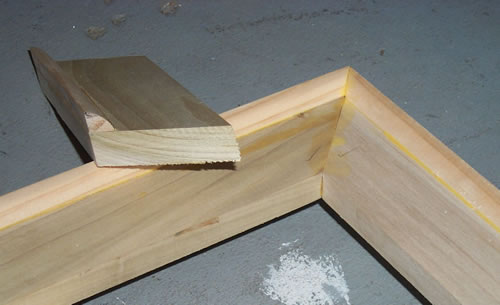
|
When I don't have access to a table saw, I make my frames by glueing
a quarter-round to the edge of 1x3 or 1x4 lumber. When I do have access
to a table saw, I rip 2x4 at an angle.
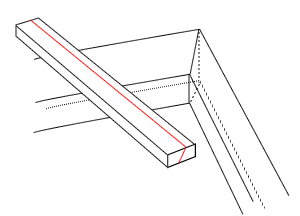
For best results, the frame should be carefully mitered and glued. I
did not use any fasteners at all on this frame, though you could place
a single screw at the corners if you have the tools to do so accurately.
This frame isn't as happy being tweaked (twisted) but is plenty strong,
especially once the fabric is stretched on it.
I make my frames this way because it insures the fabric is only contacting
the frame at the very outside edge. |
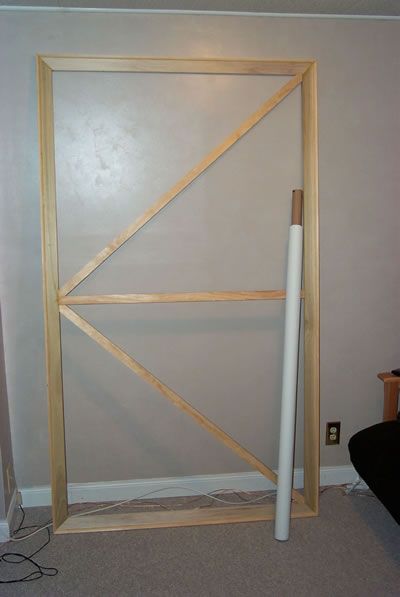 |
Everything ready to go - this is on its side from finished state. This
frame is 82 inches wide and 48 inches tall. Since the lumber is 1x3 poplar
(I couldn't find pine that wasn't warped too badly) it only requires a
single vertical brace (I like to brace every 3 feet, maximum - had I used
the 2x4 method, I probably would have put two vertical braces. The angled
braces are also critical, as they keep the frame from sagging over time.
The bracing will form a "V" once it's on the wall - the top
is to the right.
I do not feel the use of steel "L" or "T" elements
can replace proper brace construction.
|
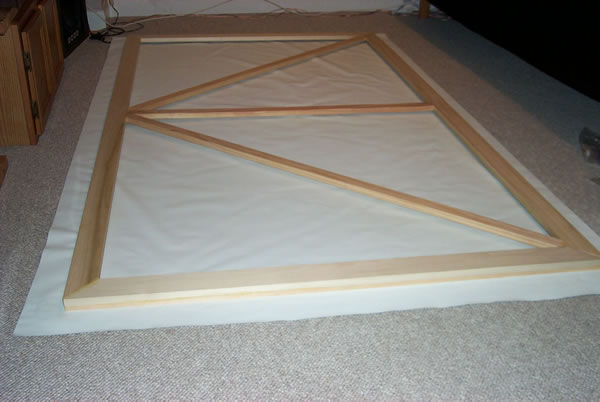 |
| Laid out on the cloth. I have about three inches of extra per side - just
enough to wrap around and be stapled. Be sure to use staples designed for
apholstery work - they'll go through the fabric without catching on the
threads. |
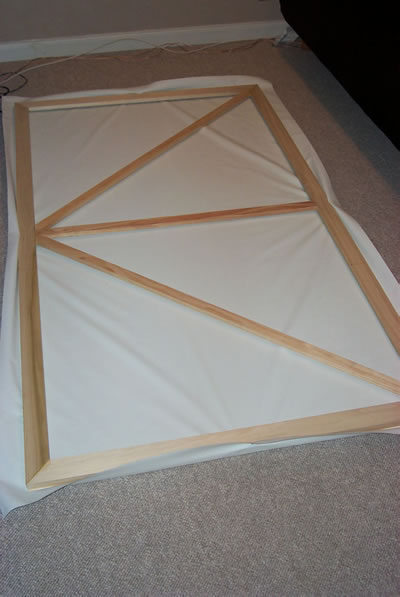 |
| Start with one staple in the middle of each side. Always work opposing
sides one after another. Pull taught, and staple. The appropriate order
as you move around the canvas is as so, till you're about three times the
height of the frame from the corner (if it's two inches tall, when you're
about six inches from the corner). I place staples every 3 inches or so.
|
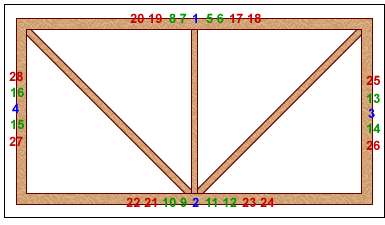 |
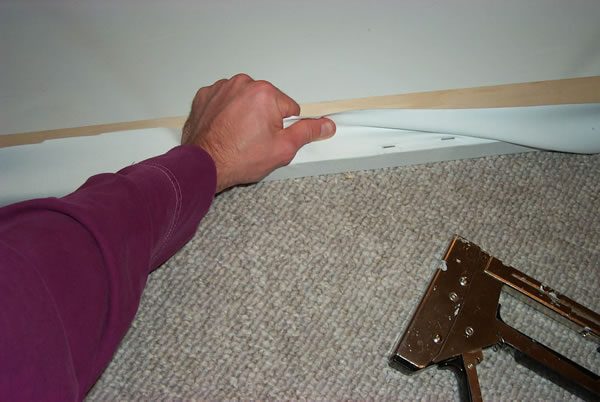 |
| When you pull the fabric tight, pull a little toward the corner. Do this,
and you'll have a wrinkle free screen! |
 |
| Ahh. We're done stapling and now need to attack the corner. |
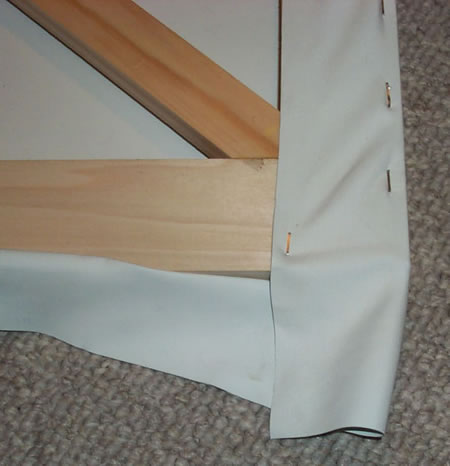 |
| Simple enough so far. Stretch the fabric snug all the way to the edge
as you staple down one side. The last staple should be on the inside edge
vs. the outside edge - this is critical for a clean corner. |
 |
| Pinch at the corner of the fabric. |
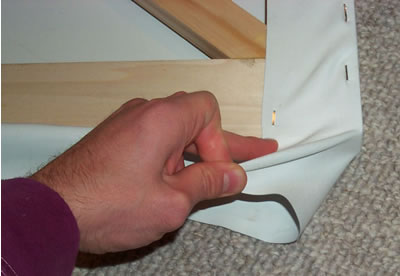 |
| Pull so the fabric is snug as it comes around the corner. Use your finger
to help it fold where you want, as you pull the fabric back as below. This
makes a snug stretch around the corner, and when you do this it |
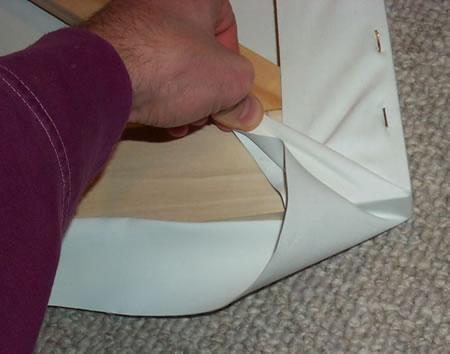 |
| Here you can see, the fabric is still snug around the corner, and ready
to be stapled. |
 |
| And, stapled. |
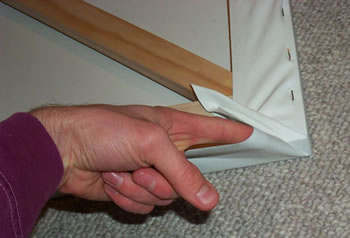 |
| This keeps everything snug. |
 |
| Pinch, and pull tight. The fabric will hold the crease well enough once
you've established it for you to move to the left, pull the fabric tight,
and staple all the way to the corner. |
 |
| A completed corner! Nice and clean, and the fabric is stretched cleanly.
Be careful stapling around the glue line - it doesn't work too well. This
is why the last staple is again inboard. That also keeps the loose end from
flopping around. |
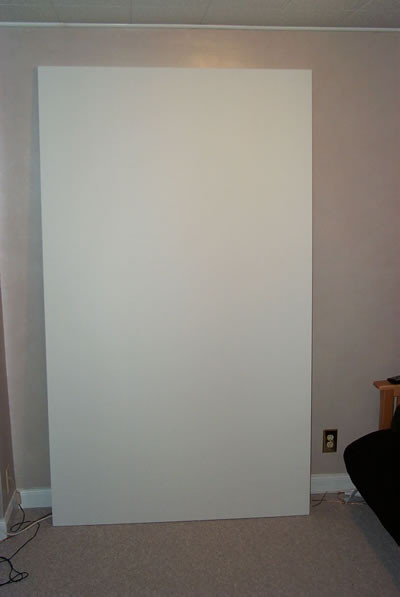 |
| Aaand, the finished screen. Tap it, and you'll notice it's drum tight,
and has a nice tone. Ready to use, or to paint. If you paint, make sure
your first coat isn't too heavy - light, and it'll actually stretch a little
tighter as it dries! When it's wet, it makes a very nice drum. |
















